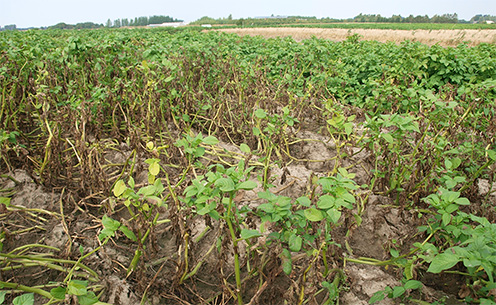PhD defense: Melanie S. Montes
Population Genetics of Phytophthora infestans
Supervisors
Søren Rosendahl (principal), BIO-UCPH
Rasmus Kjøller, BIO-UCPH
Evalution Committee
Associate professor Mette Burmølle, BIO-UCPH (Chair)
Research scientist Josselin Montarry, INRA– Joint Laboratory for Genetics, Environment and Plant Protection (IGEPP), France
Associate professor Laura Grenville-Briggs Didymus, Swedish University of Agricultural Sciences (SLU), Sweden
Abstract
Phytophthora infestans is the potato late blight pathogen, most famous for its role in the Great Famine in Ireland in the 1840s. It is still a large problem today, costing about a billion Euros in yield loss and chemical control each year on potatoes in Europe alone. It also has a profound environmental cost, as potatoes are extensively sprayed with fungicides to prevent outbreaks. If one were able to predict whether a coming epidemic had certain genes that gave it fungicide resistance or made it particularly aggressive, it would help farmers make more informed decisions about whether or not to spray their crops, and potentially lower the use of fungicides. In this thesis the groundwork was laid for such a forecasting system, by describing the structure of P. infestans outbreaks in Denmark: how it reproduces and spreads. The populations were found to mostly reproduce clonally, and showed a high diversity of lineages, with different strains appearing from field to field. Different strains were also tested for their resistance to the fungicide metalaxyl, and it was shown that there is potential for linking genetic markers to resistance. In a pilot study it was then tested whether P. infestans sporangia could be collected from the air using a spore trap in a potato field, and quantified based on their DNA content. It was found that even trace amounts of sporangia could be detected, showing the potential for using spore traps in forecasting systems, but weather patterns were still more reliable in predicting outbreaks than the number of sporangia quantified from the spore trap.

